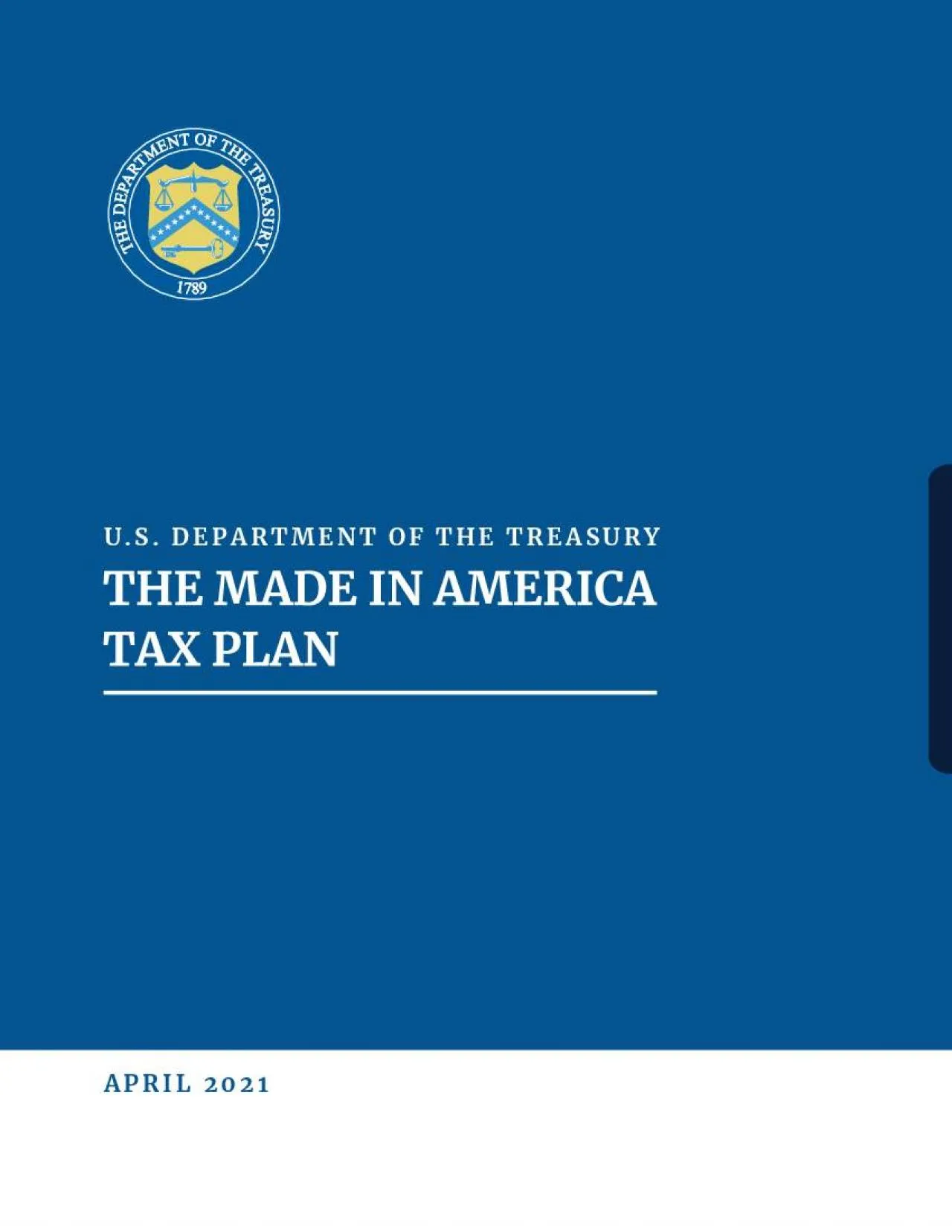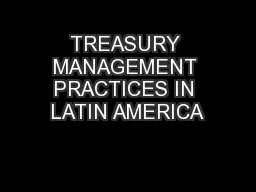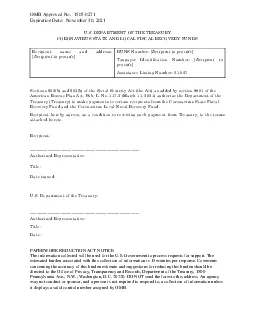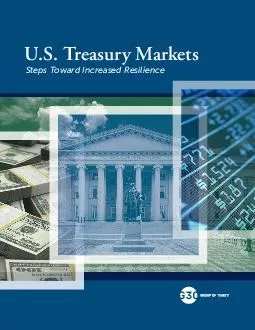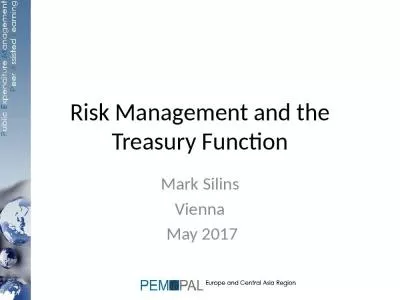PDF-US DEPARTMENT OF THE TREASURY
Author : hadley | Published Date : 2021-10-05
APRIL 2021The Made In America Tax Plan I 1Executive Summary and Introduction Last week President Biden proposed the American Jobs Plan a comprehensive proposal aimed
Presentation Embed Code
Download Presentation
Download Presentation The PPT/PDF document "US DEPARTMENT OF THE TREASURY" is the property of its rightful owner. Permission is granted to download and print the materials on this website for personal, non-commercial use only, and to display it on your personal computer provided you do not modify the materials and that you retain all copyright notices contained in the materials. By downloading content from our website, you accept the terms of this agreement.
US DEPARTMENT OF THE TREASURY: Transcript
Download Rules Of Document
"US DEPARTMENT OF THE TREASURY"The content belongs to its owner. You may download and print it for personal use, without modification, and keep all copyright notices. By downloading, you agree to these terms.
Related Documents

